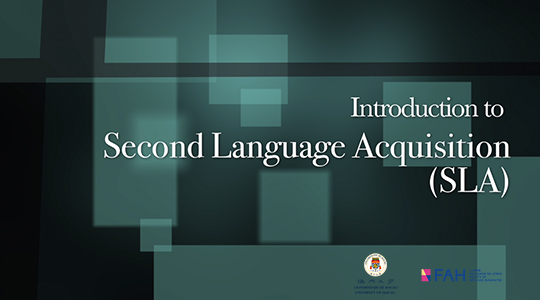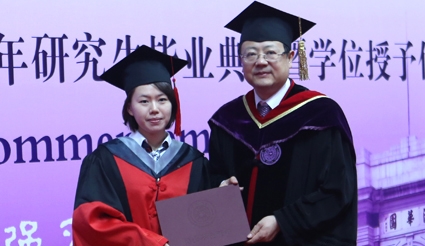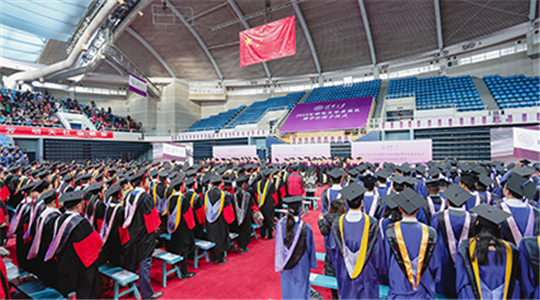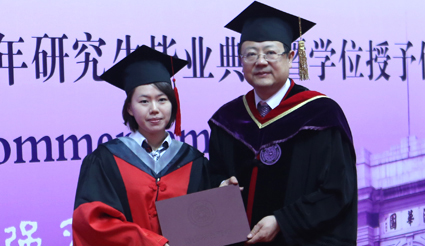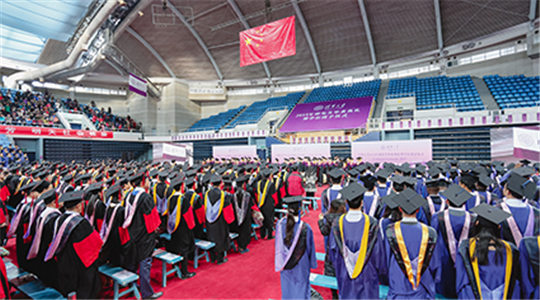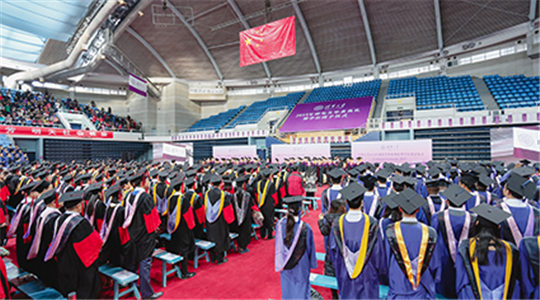
当前课程知识点:学术英语 > Module2 Academic Reading > Extended reading > html
You Are Less Beautiful Than You Think
Ozgun Atasoy
1 In April 15, 2013 Dove launched a 3-minute video entitled “Dove Real Beauty Sketches.” The video achieved instant popularity and has been watched millions of times — a successful viral campaign which has been widely talked about. In the video, a small group of women are asked to describe their faces to a person whom they cannot see. The person is a forensic artist who is there to draw pictures of the women based on their verbal descriptions. A curtain separates the artist and the women, and they never see each other. Before all this, each woman is asked to socialize with a stranger, who later separately describes the woman to the forensic artist. In the end, the women are shown the two drawings, one based on their own description, the other based on the stranger’s description. Much to their amazement and delight, the women realize that the drawings based on strangers’ descriptions depict much more beautiful women. The video ends: “You are more beautiful than you think.”
2 The idea is quite appealing. Perhaps too many women are unhappy with their looks. It would be a big relief if we all suddenly realized, like Christian Andersen’s ugly duckling, that we are in fact beautiful.
3 However, what Dove is suggesting is not actually true. The evidence from psychological research suggests instead that we tend to think of our appearance in ways that are more flattering than are warranted. This seems to be part of a broader human tendency to see ourselves through rose colored glasses. Most of us think that we are better than we actually are — not just physically, but in every way.
4 The most direct evidence that the Dove commercial is misleading comes from the work of Nicholas Epley of the University of Chicago and Erin Whitchurch of the University of Virginia. In a series of studies, Epley and Whitchurch showed that we see ourselves as better looking than we actually are. The researchers took pictures of study participants and, using a computerized procedure, produced more attractive and less attractive versions of those pictures. Participants were told that they would be presented with a series of images including their original picture and images modified from that picture. They were then asked to identify the unmodified picture. They tended to select an attractively enhanced one.
5 Epley and Whitchurch showed that people display this bias for themselves but not for strangers. The same procedure was applied to a picture of a stranger, whom the study participant met three weeks earlier during an unrelated study. Participants tended to select the unmodified picture of the stranger.
6 People tend to say that an attractively enhanced picture is their own, but Epley and Whitchurch wanted to be sure that people truly believe what they say. People recognize objects more quickly when those objects match their mental representations. Therefore, if people truly believe that an attractively enhanced picture is their own, they should recognize that picture more quickly, which is exactly what the researchers found.
7 Inflated perceptions of one’s physical appearance is a manifestation of a general phenomenon psychologists call “self-enhancement.” Researchers have shown that people overestimate the likelihood that they would engage in a desirable behavior, but are remarkably accurate when predicting the behavior of a stranger. For example, people overestimate the amount of money they would donate to charity while accurately predicting others’ donations. Similarly, people overestimate their likelihood to vote in an upcoming presidential election, while accurately predicting others’ likelihood to vote.
8 Most people believe that they are above average, a statistical impossibility. The above average effects, as they are called, are common. For example, 93 percent of drivers rate themselves as better than the median driver. Of college professors, 94 percent say that they do above-average work. People are unrealistically optimistic about their own health risks compared with those of other people. For example, people think that they are less susceptible to the flu than others. Stock pickers think the stocks they buy are more likely to end up winners than those of the average investor. If you think that self-enhancement biases exist in other people and they do not apply to you, you are not alone. Most people state that they are more likely than others to provide accurate self-assessments.
9 Why do we have positively enhanced self-views? The adaptive nature of self-enhancement might be the answer. Conveying the information that one has desirable characteristics is beneficial in a social environment. People may try to deceive others about their characteristics, but deception has two main disadvantages. First, it is cognitively taxing because the deceiver has to hold two conflicting representations of reality in mind: the true state of affairs and the deception. The resulting cognitive load reduces performance in other cognitive functions. Second, people are good at detecting deception and they show strong negative emotional reactions toward deceivers. Since in self-enhancement people truly believe that they have desirable characteristics, they can promote themselves without having to lie. Self-enhancement also boosts confidence. Researchers have shown that confidence plays a role in determining whom people choose as leaders and romantic partners. Confident people are believed more and their advice is more likely to be followed.
10 Dove’s premise is wrong. But thinking we are more beautiful than we really are may not be such a bad thing.
-Welcome to EAP course 欢迎学习“学术英语课程”
-Extended reading Unit 1
--html
--html
-Extended reading exercises
-1.1 Introduction to the module of listening skills 模块介绍
-1.2 Predicting the content 预测听力内容
--Video
--html
--图片全屏
--Audio
--html
--图片全屏
--html
--外部链接
-Module1 Listening--1.2
-1.3 Understanding main ideas: key words 抓住关键词理解大意
--Video
--html
--Video
--外部链接
-Module1 Listening--1.3
-1.4 Understanding supporting evidence (I): explicit means 理解支持性证据 (I):显性证据
--Video
--html
--图片全屏
--Audio
--外部链接
-Module1 Listening--1.4
-1.5 Understanding supporting evidence (II): implicit means 理解支持性证据 (II):隐性证据
--Video
--html
--Video
-Module1 Listening--1.5
-1.6 Recognizing rhetorical questions 辨别修辞问句
--Video
--html
--Video
-Module1 Listening——1.6
-1.7 Understanding the organization of a lecture (I): chronological order 理解讲座结构 (I):时间顺序
--Video
--html
--Video
-Module1 Listening--1.7
-1.8 Understanding the organization of a lecture (II): categorization 理解讲座结构 (II):归类
--Video
--html
--Video
-Module1 Listening--1.8
-1.9 Handling unfamiliar words 应对不熟悉词汇
--Video
--html
--Video
--html
-Module1 Listening--1.9
-1.10 Understanding vocabulary from the context 从上下文理解词汇
--Video
--html
--Video
--html
-Module1 Listening--1.10
-1.11 Focusing on numbers & statistics 注意数字与数据
--Video
--html
--Video
-Module1 Listening--1.11
-1.12 Recognizing analogy 辨别类比
--Video
--html
--Video
-Module1 Listening--1.12
-1.13 Recognizing signposting language (I): contrast 辨别指示性语言 (I):对比
--Video
--html
--Video
-Module1 Listening--1.13
-1.14 Recognizing signposting language (II): consequence 辨别指示性语言 (II):结果
--Video
--html
--Video
-Module1 Listening--1.14
-1.15 Recognizing signposting language (III): presenting factual information 辨别指示性语言 (III):陈述事实信息
--Video
--html
--Video
-Module1 Listening--1.15
-1.16 Note-taking: numbers & diagrams 记笔记:数字和图表
--Video
--html
--Video
--html
--Video
-Module1 Listening--1.16
-1.17 Summary to the module of listening skills 模块总结
--Video
-Module test
--Video
--html
--Module1 Academic Listening--Module test
-Extended reading
--html
--html
-Module1 Extended reading
-2.1 Introduction to the module of reading skills 模块介绍
--Video
-Module2 Reading--2.1
-2.2 Surveying an article 浏览文章
--Video
-Module2 Reading--2.2
-2.3 Skimming and scanning 查读和略读
--Video
-Module2 Reading--2.3
-2.4 Recognizing text organization / structure 识别文章结构
--Video
-Module2 Reading--2.4
-2.5 Identifying the author's evaluation 识别作者评价
--Video
-Module2 Reading--2.5
-2.6 Identifying the thesis statement 识别文章中心句
--Video
-Module2 Reading--2.6
-2.7 Increasing reading speed 提高阅读速度
--Video
-Module2 Reading--2.7
-Module test 2-1
--html
--外部链接
--html
--html
--图片全屏
--html
--html
--外部链接
-Module2 Academic Reading--Module test 2-1
-2.8 Guessing unfamiliar words from context 从上下文猜测词意
--Video
-Module2 Reading--2.8
-2.9 Recognizing topic sentence and supporting evidence 识别主题句和支持性证据
--Video
-Module2 Reading--2.9
-2.10 Understanding quotations 理解引语
--Video
-Module2 Reading--2.10
-2.11 Using questions for effective reading 使用问句促进阅读
--Video
-Module2 Reading--2.11
-2.12 Recognizing classification 识别分类
--Video
-Module2 Reading--2.12
-2.13 Recognizing comparison and contrast 识别比较和对比
--Video
-Module2 Reading--2.13
-2.14 Recognizing cause and effect 识别因果关系
--Video
-Module2 Reading--2.14
-2.15 Annotating the text 标记文章
--Video
-Module2 Reading--2.15
-2.16 Summary to the module of reading skills 模块总结
--Video
-Module test 2-2
--html
--外部链接
--html
--外部链接
--html
--外部链接
--Module2 Academic Reading--Module test 2-2
-Extended reading
--html
--html
-Module2 Extended reading
-3.1 Introduction to the module of speaking skills 模块介绍
--Video
--html
-Module3 Speaking--3.1
-3.2 Preparing for a presentation 准备陈述报告
--Video
-Module3 Speaking--3.2
-3.3 Opening a presentation 开始陈述报告
--Video
-Module3 Speaking--3.3
-3.4 Presenting the main body 陈述报告主体
--Video
-Module3 Speaking--3.4
-3.5 Concluding the presentation 结束陈述报告
--Video
-Module3 Speaking--3.5
-3.6 Evaluating students' presentation 评价学生的陈述报告
--Video
-Module3 Speaking--3.6
-Module test 3-1
--html
-Module3 Academic Speaking--Module test 3-1
-3.7 Opening a discussion; Agreeing and disagreeing 开始讨论;表达赞同与不赞同
--Video
-Module3 Speaking--3.7
-3.8 Keeping a discussion going; Discussing the pros and cons 保持讨论;支持与反对
--Video
-Module3 Speaking--3.8
-3.9 Interrupting politely; Asking for clarification or confirmation 客气地打断讨论;要求对方阐释或确认
--Video
-Module3 Speaking--3.9
-3.10 Expressing an opinion; Supporting an opinion 表达观点;支撑观点
--Video
--Video
-Module3 Speaking--3.10
-3.11 Evaluating students' group discussion 评价学生的讨论
--Video
-Module3 Speaking--3.11
-3.12 Summary to the module of speaking skills 模块总结
--Video
-Module3 Speaking--3.12
-Module test 3-2
--Module3 Academic Speaking--Module test 3-2
-Extended reading
--html
--html
--Module3 Extended reading
-4.1 Introduction to the module of writing skills 模块介绍
--Video
-Module4 Writing--4.1
-4.2 Writing an introduction 写文章开头
--Video
-Module4 Writing--4.2
-4.3 Writing a thesis statement 写文章中心句
--Video
-Module4 Writing--4.3
-4.4 Writing the main body 写文章主体
--Video
-Module4 Writing--4.4
-4.5 Writing a body paragraph 写主体段落
--Video
-Module4 Writing--4.5
-4.6 Writing a conclusion 写文章结论
--Video
-Module4 Writing--4.6
-4.7 Evaluating students' writing (structure) 评价学生的写作(结构方面)
--Video
-Module4 Writing--4.7
-Module test 2-1
--Module4 Academic Writing--Module test 2-1
-4.8 Writing in formal languge 用正式文体写作
--Video
--Video
-Module4 Writing--4.8
-4.9 Writing in cautious language 用谨慎的话语写作
--Video
--Video
-Module4 Writing--4.9
-4.10 Writing in efficient language 用简练的话语写作
--Video
--Video
-Module4 Writing--4.10
-4.11 Avoiding plagiarism (quoting, paraphrasing and summarizing) 避免学术抄袭(引用,改写,总结)
--Video
-Module4 Writing--4.11
-4.12 Avoiding plagiarism (acknowledging sources) 避免学术抄袭(注明出处)
--Video
-Module4 Writing--4.12
-4.13 Summary to the module of writing skills
--Video
-Module4 Writing--4.13
-Module test 2-2
--Module4 Academic Writing--Module test 2-2
-Extended reading
--html
--html
--Module4 Extended readinging
-5.1 Introduction to the module of translating skills
--Video
-Module5 Translating--5.1
-5.2 What is translation 什么是翻译
--Video
-5.3 How to get ready for translation? 怎样做好翻译的准备?
--Video
-Module5 Translating--5.3
-5.4 Word-for-word translation 逐字翻译
--Video
-Module5 Translating--5.4
-5.5 Diction (I): grammatical clues 词意的选择(I):语法线索
--Video
-Module5 Translating--5.5
-5.6 Diction (II): collocation clues 词意的选择(I):词汇搭配线索
--Video
-Module5 Translating--5.6
-5.7 Omission (I): leaving out unnecessary prepositions and conjunctions 省略法(I):删减不必要的介词和连词
--Video
-Module5 Academic Translating--5.7 Omissio
-5.8 Omission (II): leaving out unnecessary articles 省略法(II):删减不必要的冠词
--Video
-Module5 Translating--5.8
-5.9 Conversion (I): translating nouns as adjectives or verbs 词性转换(I):名词翻为形容词或动词
--Video
-Module5 Translating--5.9
-5.10 Conversion (II): translating verbs as nouns or adverbs 词性转换(II):动词翻为名词或副词
--Video
-Module5 Translating--5.10
-5.11 Addition (I): adding nouns 增词法(I):增加名词
--Video
-5.12 Addition (II): adding adjectives or adverbs 增词法(II):增加形容词或副词
--Video
-Module5 Translating--5.12
-5.13 Addition (III): adding verbs 增词法(III):增加动词
--Video
-Module5 Translating--5.13
-5.14 Addition (IV)): adding conjunctions 增词法(IV):增加连词
--Video
-Module5 Translating--5.14
-5.15 Translating relative clauses (I): as pre-modifiers 翻译关系从句(I):作为前置修饰语
--Video
-Module5 Translating--5.15
-5.16 Translating relative clauses (II): as post-modifiers 翻译关系从句(II):作为后置修饰语
--Video
-Module5 Translating--5.16
-5.17 Translating relative clauses (III): merging 翻译关系从句(I):合并
--Video
-Module5 Translating--5.17
-5.18 Translating relative clauses (IV): dividing 翻译关系从句(I):分裂
--Video
-Module5 Translating--5.18
-5.19 Translating passive constructions (I): as active constructions 翻译被动结构(I):翻为主动结构
--Video
-Module5 Translating--5.19
-5.20 Translating passive constructions (II): as passive constructions 翻译被动结构(I):翻为被动结构
--Video
-Module5 Translating--5.20
-5.21 Evaluating students' translation 评价学生的翻译作品
--Video
-Module5 Translating--5.21
-5.22 Summary to the module of translating skills 模块总结
--Video
-Module5 Translating--5.22
-Module test
--Module5 Academic Translating--Module test
-Extended reading
--html
--html
-Module5 Extended reading

